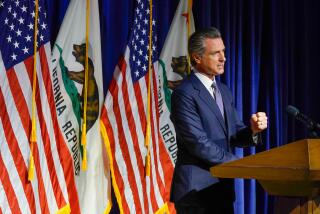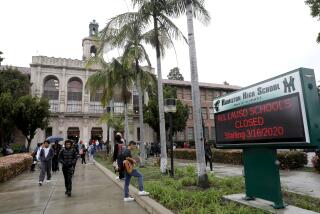Following the Federal Dollar
- Share via
The 1999 budget proposed Monday would bolster spending for elementary and secondary education, even as it attempts to leave a spending surplus for the federal government for the first time since 1969.
Where it comes from
Individual income taxes: 46
Social Security, Medicare and other payroll taxes: 34
Corporate income taxes: 11
Excise taxes: 4
Other: 5
*
Where it goes, compared to 1989
*--*
1989 1999 Direct benefits payments 47% 60% National defense 27% 15% Interest payments 15% 14% Local, state grants 5% 6%
*--*
Note: The remaining spending each year--7% in 1989 and 5% in 1999--goes to other programs.
****
Where Education Money Would Go
The major components of President Clinton’s proposals to boost elementary and secondary education spending by 18% in the coming year and another 7% by the year 2003.
(Five-year cost in billions)
New teachers: Hire 100,000 new teachers to reduce average class size in grades 1 to 3 from 22 to 18 ($7.3)
School construction: Provide tax breaks for school construction and renovation bonds ($5.0)
Early learning fund: Provide grants to communities for education and child care for children under 5 ($3.0)
Education opportunity zones: Provide extra aid for 50 high-poverty, low-achievement urban and rural school districts ($1.5)
****
The Deficit Over Time
IN CURRENT DOLLAR. Surplus or deficit (-)
(dollar amounts in billions)
1999
2003
Note: Figures for 1998-2003 are estimates
Source: Budget of the U.S. Government Historical Tables-Fiscal Year 1999
Researched by EDITH STANLEY / Los Angeles Times
Sources: Office of Management and Budget, Associated Press, Times Washington Bureau
More to Read
Sign up for Essential California
The most important California stories and recommendations in your inbox every morning.
You may occasionally receive promotional content from the Los Angeles Times.










